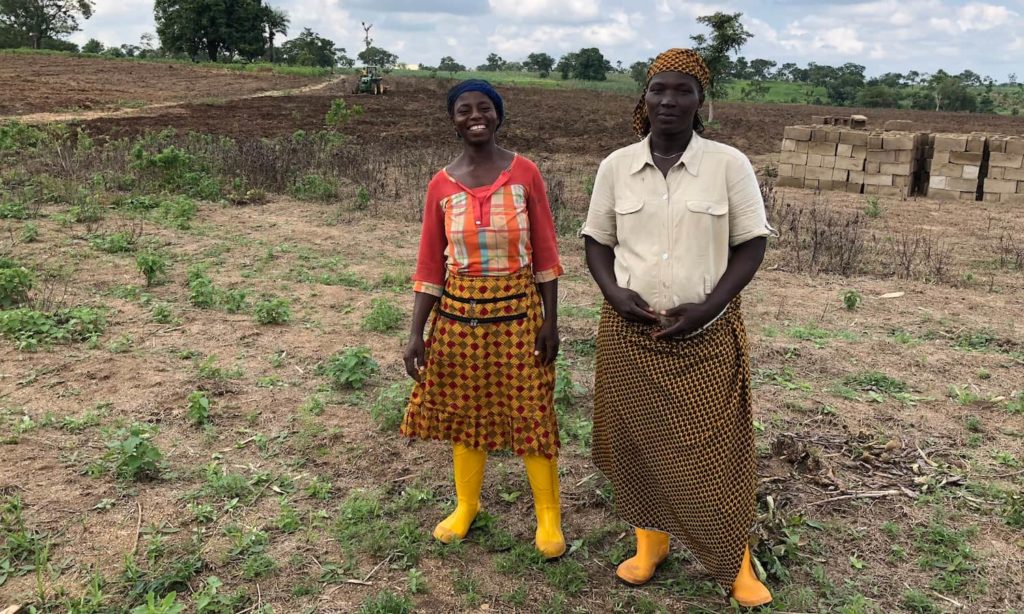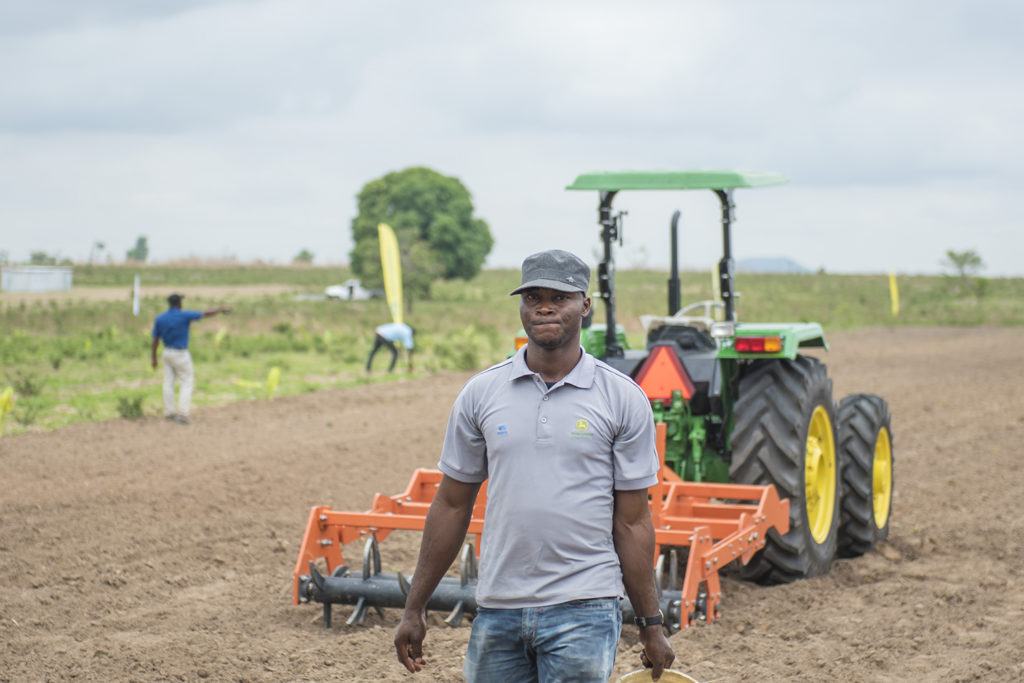
What our cross-sector collaborations have taught us about joining forces to achieve impact at scale.
By Jehiel Oliver | Chief Executive Officer of Hello Tractor
As the saying goes, “No man is an island.” Neither is a social enterprise. At least not when the aim is to create sustainable impact and commercial scale. This is especially true in agriculture, where the public, private, and nonprofit sectors are inextricably intertwined. And by developing and strengthening all parts of the ecosystem through collaborative partnerships – impact can be achieved on a much larger scale.
But forming a partnership is not always easy. The process can be time consuming, painful, and resource intensive. To find the right fit, a lot of work must first go into understanding what challenges and gaps exist, then identifying which partners are best suited to address those gaps.
To share our learnings and save you some time, we’ve outlined four key steps that can help make this process easier for you. But first, a quick background on the partnerships that helped us glean these insights.
By developing and strengthening all parts of the ecosystem through collaborative partnerships – impact can be achieved on a much larger scale.
THE INTERSECTION OF AG & TECH
Hello Tractor has emerged as a true agricultural mechanization platform. Not just because we have a technology offering, but because we’ve been able to establish strategic partnerships with both public and private sector organizations who share our belief that market-based solutions can improve the lives of smallholder farmers. These partners – from John Deere to IBM – have been critical to enabling us to scale our solution across markets in order to maximize our impact.
The partnership with John Deere is multidimensional and has opened new growth opportunities for Hello Tractor as we look to expand our footprint across Africa and Asia. Deere has positioned us as their exclusive telematics partner for Africa – giving us direct access to their dealer networks on the continent plus strategic partnership opportunities on large projects like the 10,000 unit NAMEL deal in Nigeria.
In addition to being a supply chain partner, we’re also working with Deere on their inaugural collaborator program – a component of which is pairing us with John Deere executives. Our executive partner is the global head of John Deere Embedded Solutions. And through this relationship, we’ll be exploring improvements to the John Deere technology stack, including enhanced telematics units with enhanced capabilities at the tractor operator level (onboard farm booking management, repair and maintenance alerts, and route planning). This new solution will also incorporate enhanced cognitive solutions being offered by our technology partner, IBM.
With IBM, we’re focused on using innovative technologies to revolutionize agriculture. In particular, we’re bringing about a revolution that’s broad, inclusive, and community-oriented. These shared values make us a perfect pairing for a technical partnership, especially focused on smallholder farmers.
To make the partnership work, we equip tractor owners with the tools needed to better manage their farms while IBM uses its experience and research to strengthen our platform to reach these tractor owners. Scientists at the IBM lab work closely with our developers to apply several technologies to the app, like the Watson Decision Platform for Agriculture, blockchain, the Internet of Things (IoT), and IBM Cloud. This sort of work has resulted in the launch of our latest technology offering for banks and other financing organizations in which a blockchain-enabled and AI-based decision support platform enables capturing, tracking, and instant sharing of data while creating end-to-end trust and transparency for all parties involved across the agribusiness value chain.
Our collaboration with IBM is beneficial to both companies, as it enhances their growth and helps us achieve impact at scale.
To find the right fit, first understand what challenges and gaps exist, then identify which partners are best suited to address those gaps.
FOUR STEPS TO MASTER PARTNERSHIPS
Through the above examples, it’s clear just how impactful the right partnerships with corporate brands can be for any social enterprise. However, as we mentioned earlier, forming a partnership is not as easy as it looks.
Now, on to the four key steps:
1. Understand your organizational goals and prioritize accordingly.
This should be the first step before even considering a partnership with that organization you like so much. What are you looking to achieve through your social enterprise? What are your immediate goals? What are your long-term goals? Where are there gaps to be filled? How can this partner help fill the gaps?
These are key questions you need to ask yourself before delving into any partnership. And the answers will help you put things in perspective, ensure you’re clear on what’s most strategic, and keep you from straying from your organizational goals.
2. Identify and talk to the right people, then kick off.
Once you’re clear on the gaps that need to be filled within your social enterprise, identify potential partners who share similar values that can help bridge these gaps. Reach out to them and lock in initial meetings where you can align on your goals, establish roles and responsibilities, and outline milestones and outcomes. This is important to ensure the implementation of defined activities happens in a smooth and effective manner. And that both parties are satisfied with the results that will stem from the partnership. Then after an agreement has been reached and budgets are approved by both parties, the partnership can kick off on a solid foot.
3. Monitor progress and make improvements where necessary.
As your partnership progresses, it’s a good practice to take a step back once in a while to evaluate how effectively the relationship is filling the gaps you initially identified and that it’s adding clear value to your enterprise. Things are bound to happen during the course of a partnership that can change the dynamics of how things work. Missions can evolve, geographical interests can shift, team members might move on and be replaced. Hence, it’s important to check in – say, quarterly – to make sure things are still on track and that the partnership still revolves around trust, honesty, and integrity of work.
4. Redefine and develop new goals.
If you reach a point where the gaps that had previously been a source of concern have been addressed through your partnership, look for other areas where you can achieve further impact together. You can either build on the existing solution that’s been created or think through new areas where you can grow in collaboration. Share your ideas with your partner and get their buy-in to move forward. This approach helps keep things fresh and allows you to keep innovating.
“Bart was instrumental in laying the groundwork for Hello Tractor’s work in building a pay-as-you-go financial product for our tractor owners. Stealth and agility are the two words that best characterize the benefits of working with Pace Able to develop and test high-impact products on behalf of customers like John Deere.”
Jehiel Oliver, Hello Tractor CEO
































